Amy Myers's Blog, page 50
November 12, 2018
6 Ways Sugar Wrecks Your Health & How to Beat Sugar Cravings
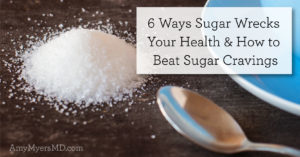
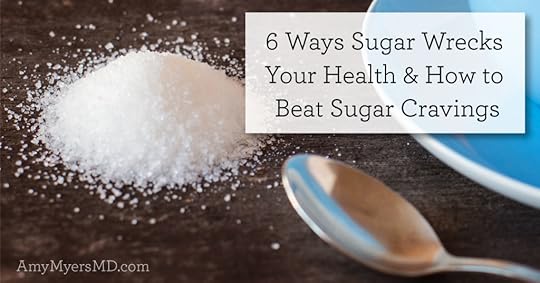
Sugar does more than just rot your teeth. It wreaks havoc on your gut, your skin, your joints, your mood, and sets you on the path to chronic illness. There’s no doubt that sugar is bad news, yet Americans still consume an average of 20 teaspoons of sugar daily. That’s an astounding 66 pounds of added sugar per person annually.1 If you’re looking to optimize your diet, read on to find out the many ways sugar wrecks your health along with some helpful strategies to beat sugar cravings and kick the habit for good.
Hidden Sources of Sugar
Let’s face it, sugar is one of life’s sweet treats, a “guilty pleasure” that is difficult to avoid over the course of your day if you’re not actively checking ingredient labels. Aside from the usual suspects such as baked goods, soda, and fruit juice, sugar can be hiding in everything from pasta sauce to yogurt to salad dressing.
Because sugar is so ubiquitous, your best bet is to make your own food and condiments in order to minimize or eliminate it completely from your diet. (I have some great tips for making pantry staples from yogurt to nightshade-free ketchup in my cookbook, The Autoimmune Solution Cookbook!)
When you don’t have time to make your own and need the convenience of packaged goods, keep the following list of common hidden sources of sugar in mind and always read ingredient labels closely:
Common Hidden Sources of Sugar
Granola and Cereal
Protein Bars
Yogurt
Gluten Free Bread
Premade Sauces and Dressings
Nut and Seed Butters
Non-Dairy Milk
Protein Powders
Sugar can also hide under dozens of different names on food labels. Here are the most common names for hidden sugar in food products to help you make careful choices at the grocery store:
Common Names for Sugar on Ingredient Labels
Ingredients ending in “-ose” (sucrose, fructose, sucralose)
Ingredients ending in “-ol” (sorbitol, inversol, carbitol)
Brown rice syrup
Concentrated fruit juice
Corn sweetener
Diglycerides
Disaccharides
Evaporated cane juice
Fructooligosaccharides
Isomalt
Maltodextrin
Malted barley nectar
Sucanat
The good news is that the FDA now requires most companies to list added sugars on packaged goods, so you’ll know how much sugar is naturally occurring in the foods used to make the products, and how much is just empty calories.
So how much is too much? The American Heart Association recommends that women consume less than 25g, and men less than 36g of added sugar per day.2 To put that in perspective, there are roughly 4g of sugar in a teaspoon, so that would be less than 6 teaspoons a day for women and no more than 9 teaspoons a day for men. Remember that this is the upper limit, and I recommend aiming for even less than this amount to achieve optimal health.
Your Body on Sugar: Inflammation, Autoimmunity, and Chronic Illness
In our hunter-gatherer days, a piece of fruit would be a welcome source of quick-release energy. Refined sugar, however, is a modern invention that our bodies did not evolve to have the capacity to deal with properly. We are also consuming far greater quantities of sugar than we were ever designed to handle. In the course of a normal day, your body simply doesn’t need all those quick, intense bursts of energy that sugar provides, especially since you aren’t running from predators or hunting down your own food.
Not only is added sugar unnecessary for proper functioning, it’s actively detrimental to your overall wellbeing. Let’s take a look at some of the many ways sugar wreaks havoc on your health.
1. Autoimmune Disease
Sugar affects your entire body because it is an inflammatory food, and inflammation is at the root of nearly every chronic illness. Studies have shown that a high-sugar diet is linked to joint pain and increases your risk of developing rheumatoid arthritis.3 That’s because excess sugar in your bloodstream generates free radicals, which damage your cells and trigger an inflammatory immune response.4 The more inflammation you have, the further up you are on the autoimmune spectrum, and the closer you are to developing a full-blown autoimmune disease (or a second, or a third).
2. Insulin Resistance
Excessive sugar intake causes your pancreas to overproduce insulin in an attempt to balance your blood sugar.5 Eventually your liver becomes overwhelmed and develops insulin resistance. Insulin resistance is the most powerful predictor of developing type 2 diabetes, and can also lead to heart disease, stroke, fatty liver, and polycystic ovary syndrome.6,7
3. Candida Overgrowth
What you eat has the power to alter your gut microbiome, and research shows this can happen as quickly as 18-20 hours.8 This is important because a diet high in sugar feeds the yeast in your gut, which can lead to Candida overgrowth. Candida overgrowth causes a wide range of health issues, including vaginal infections, seasonal allergies, digestive issues, and skin or nail fungus. Candida also causes leaky gut and can trigger or worsen autoimmune diseases by suppressing the immune system and prolonging inflammation.9 And because yeast feeds on carbohydrates, once you have an overgrowth, the Candida will cause you to crave sugar even more, leading to a vicious cycle that’s hard to break.
4. Premature Aging
Skin health is more than just vanity. Clear, glowing skin is an indication that everything underneath is functioning optimally.
Sugar messes with your skin in a few critical ways. According to the American Academy of Dermatology, foods with a high glycemic index such as sugar or carbohydrate-rich foods can cause breakouts.10 Sugar also binds to proteins in your bloodstream and forms molecules known appropriately as AGEs (advanced glycation end products).11 AGEs damage your skin’s elastin and collagen (the protein that keeps your skin firm and plump), leading to wrinkles and saggy skin.
5. Addiction and Depression
Sugar not only affects your physical health–it has a huge impact on your psychological health as well. That’s because sugar is essentially a drug in the way it interacts with your brain’s reward pathway. When you eat sugar, your dopamine levels surge in the same way they do with heroin (though not quite as intense).12 Eventually your brain gets addicted and requires more and more sugar to get the same amount of pleasure, which is why eating sugar makes you crave even more sugary foods.
Because sugar actively depletes your dopamine levels, a high-sugar diet can also lead to depression. A study that followed 8,000 men over 22 years found that those who ate more than 67g of sugar daily were 23% more likely to be diagnosed with depression than those who ate 40g or less.13
6. Heart Disease
Heart disease is the leading cause of death for both men and women.14 Researchers found that people who eat the most added sugar (at least 25% of their daily calories) are twice as likely to die from heart disease than those who get less than 10% of their total calories from sugar.15 Sugar causes your artery walls to grow faster than normal and tense up, leading to heart attacks, stroke, and cardiovascular disease. Eating less sugar can also help lower your blood pressure, which is a major risk factor for heart disease.16
How to Beat Sugar Cravings
Now that you’re convinced that cutting back on sugar is one of the best ways to attain optimal health, you’ll need to arm yourself with strategies for overcoming those dreaded sugar cravings. Fortunately, once you’re no longer relying on sugar for a quick fix, you will begin to crave sugary foods less and less! Here are a few tried-and-true measures you can take to curb those cravings.
1. Manage Stress
You’re probably all too familiar with the phenomenon of stress-eating. After a disagreement with your spouse, a hard day at the office, or any other emotionally troubling event, you find yourself reaching for the pint of ice cream, the candy bar, or another sweet treat that will trigger the release of feel-good chemicals in your brain. Don’t beat yourself up–it happens to the best of us! And it has nothing to do with willpower. In fact, stress-eating is hard-wired into our systems!
When you’re stressed, your cortisol levels shoot up. Cortisol is your body’s “fight-or-flight” hormone that helps mobilize sugars to your muscles in order to give them the energy to fight or run away from the stressor (e.g. a lion).17 However, this evolutionary response does not align with our modern day stressors, which are chronic and largely psychological. If you are stressed out all the time as many of us are, your body thinks it needs a constant supply of sugar to fuel your muscles to overcome the obstacle at hand, causing you to “stress eat” loads of sugary foods.
The solution to this is to manage your stress with self-care. Find ways to reduce your stress levels, whether it be through meditation, a walk in nature, a fun hobby you enjoy, or pampering yourself with a massage. When you feel a sugar craving coming on, try a stress-busting activity instead, even if it’s just sipping on a warm cup of tea!
2. Add Protein and Healthy Fats into your Diet
Another strategy for beating sugar cravings before they arise is to nourish yourself with filling protein and healthy fats. If you’ve ever experienced the irritability that comes with low blood sugar from not eating (known popularly as being “hangry”), then you know why it’s tempting to reach for sugary food that will get digested rapidly to bring your blood sugar back up as fast as possible. However, this inevitably sends your body on a rollercoaster of insulin spikes and crashes, leading to even more cravings.
Instead, be sure to include some protein and healthy fats with every meal (and as a between-meal snack, if necessary) to keep your blood sugar stable and help you stay full and satisfied until your next meal. A protein shake with some added fat such as coconut milk or avocado is a perfect way to curb those sugar cravings. (If you’re a coffee fan, check out my Mocha Latte Paleo Protein for a healthy alternative to a frappe!)
3. Build Your Supplement Arsenal
There are a number of supplements you can take to support your efforts to tame sugar cravings. The first I would recommend is L-glutamine. L-glutamine keeps your blood sugar levels stable throughout the day and supports a balanced insulin response. By curbing sugar cravings, it helps you maintain a healthy weight.
My Leaky Gut Revive powder contains 3000mg of L-glutamine, plus deglycyrrhizinated licorice, which is also beneficial for maintaining optimal blood glucose levels.
powder contains 3000mg of L-glutamine, plus deglycyrrhizinated licorice, which is also beneficial for maintaining optimal blood glucose levels.
B-vitamins such as thiamin and niacin are great for beating sugar cravings because they help your body deal with stress and metabolize nutrients (which are often depleted by stress) more efficiently.
Finally, chromium is a trace mineral that prevents cravings for carbohydrates, supports optimal fasting and post-meal blood sugar levels, and assists in mitigating adrenal cortisol production. Chromium also helps you maintain normal insulin sensitivity.
Beat Holiday Sugar Cravings with L-Glutamine!

Do you want to curb your cravings for sweets this holiday season, get rid of that belly bloat, AND repair your gut – all at the same time?
L-Glutamine will help get you on the right track. L-glutamine supports a balanced insulin response, which in turn helps keep your blood sugar levels in check throughout the day.
And, now through Thursday, November 15th at Midnight CST, you can SAVE on 1, 2, or 3 bottles of L-Glutamine – the more you buy, the more you SAVE!
Buy 1: SAVE 15%
Buy 2: SAVE 20%
Buy 3: SAVE 25%
25% OFF is the largest savings I have ever offered on one of my supplements because I want as many people as possible to have access to L-glutamine’s fantastic benefits and feel the difference it makes!
Don’t miss out on this amazing offer!
Stock up and SAVE on L-Glutamine TODAY!
The post 6 Ways Sugar Wrecks Your Health & How to Beat Sugar Cravings appeared first on Amy Myers MD.
November 10, 2018
9 Ways to Relieve Joint Pain Naturally

 Joint pain comes in many forms and can be uncomfortable at best and very debilitating at its worst. Whether it’s knee pain after exercise, wrist and finger pain after typing emails to loved ones, or weekend home improvements, joint pain is extremely widespread and can affect adults of all ages. Knee pain alone affects around 25% of adults, limiting mobility and impairing their quality of life.1 However, it is likely that you will experience the symptoms of joint pain in multiple locations throughout your body.2
Joint pain comes in many forms and can be uncomfortable at best and very debilitating at its worst. Whether it’s knee pain after exercise, wrist and finger pain after typing emails to loved ones, or weekend home improvements, joint pain is extremely widespread and can affect adults of all ages. Knee pain alone affects around 25% of adults, limiting mobility and impairing their quality of life.1 However, it is likely that you will experience the symptoms of joint pain in multiple locations throughout your body.2
Joint pain is also a major symptom of conditions such as rheumatoid arthritis and osteoarthritis. Just under 30% of all adults aged between 45 and 64 years and nearly 50% of those over 65 in the United States have been diagnosed with arthritis.3 In fact, it is the leading cause of disability in the U.S.4
Fortunately, you are not destined to a life of sore, achy joints or relying on harsh NSAIDs to manage your pain. There are many natural ways to relieve joint pain. First, let’s look at some of the root causes of joint pain, and then I’ll share with you 9 ways to relieve joint pain naturally.
The Root Causes Of Joint Pain
Why do joints hurt? It all comes down to inflammation. When your body is inflamed, joint nerves become more sensitive to movements.5 This can lead to a dull ache, a burning sensation, stiffness, swelling, and other symptoms, and you may feel worse in the morning or when you perform certain activities.6
Joint pain can also be caused by:
Older age: When you reach age 40, the collagen that builds cartilage in your joints starts to deplete quicker than your body can reproduce it. By age 60, more than half of your body’s collagen has been depleted, making aches and pains more likely.7
Rheumatoid arthritis or osteoarthritis: These common problems can be triggered by your body attacking itself—in the case of rheumatoid arthritis—or brought on by wear and tear–in the case of osteoarthritis–leading to painful sensations and inflammation.
Repetitive movements: Are you an athlete, or did you enjoy a particular sport when you were younger that led to joint pain? This is a common issue for dancers, cyclists, runners, rowers, and gymnasts, who may have put a lot of pressure on their hips, pelvis, back, knees or ankles and made certain movements over and over.8
Injuries, impact, and trauma: Damaging your joints and surrounding tissues can naturally lead to pain, swelling, and discomfort in the short-term. However, sometimes these symptoms come back or don’t go away completely in the long-term.
Hypermobility: Studies show that while some flexibility in the joints is beneficial, joint movements that go beyond your normal range of motion can lead to joint problems, even if you’re young.9
Cigarette smoking: A link has been made between joint pain and smoking, a practice that promotes inflammation and dehydration in your body.10
Autoimmune disorders: Being on the autoimmune spectrum, or having a disorder such as Hashimoto’s or fibromyalgia increases inflammation in your body, putting you at risk of experiencing joint pain, along with a host of other symptoms.
The good news is that no matter what is causing your joint pain, there is a wide range of ways you can lower the inflammation levels behind it. Beginning with…
1. Maintaining A Healthy Weight
The connection between overweight and joint pain is strong. Studies show that adults over 18 years of age who are overweight or obese are up to 15% more likely to report doctor-diagnosed arthritis.11 This is because carrying around extra weight puts more strain on your joints and bones.
The wonderful news is that shedding even just a few pounds can ease pain and prevent future inflammation.
2. Gentle Movement & Exercise
Though it might feel counterintuitive at first, including aerobic and resistance exercise training in your routine is one of the best steps you can take to improve your joints.12
Studies show that the following types of exercise are best:13
Aerobics and water aerobics
Strengthening exercises, such as lifting light weights
Conditioning activities that strengthen your heart and lungs, such as bicycling, swimming, dancing, and brisk walking
Tai chi, the Chinese martial art that uses slow, continuous movements to work and tone your body
Yoga, which uses breathing and poses to improve flexibility and coordination, and reduce stress
The key point to remember here is that because inactivity can cause joint pain and worsen conditions such as arthritis, any kind of low-impact movement you enjoy will be beneficial to your joints. Find the activity that you enjoy the most, as that is the one you’ll stick with! Wear a brace or wrap around painful joints to help you get started if needed, particularly if you are dealing with some overweight.
3. Taking a Bath in Epsom Salts
After exercise, I love taking a detoxifying, relaxing bath with Epsom Salts. Epsom salts are high in magnesium and sulfates, and can help lower inflammation, relax tense muscles and reduce muscle spasms.14 The minerals they contain are absorbed through your skin, so adding them to your bath, or even making a compress applied directly to the achy area that is bothering you, can lead to quick results. Take two cups of salts and add them to your bath water, or to a gallon of water, then soak a towel in it for a few minutes before applying to your skin.
4. Acupuncture
Acupuncture is an ancient Chinese therapy with a history going back thousands of years. It has been shown to enhance joint function in rheumatoid arthritis cases, as well as reduce tenderness, morning stiffness, and inflammation.15,16
In patients with osteoarthritis, ongoing treatment for more than four weeks showed that the benefits of acupuncture increase over time, and it can reduce pain, boost your quality of life, and increase mobility.17 From my experience, acupuncture can also be a very relaxing experience. Give it a try!
4. Eating an Anti-inflammatory Diet
I want to emphasize the power that simple changes to your diet can make. As you now know, the main cause of joint pain is inflammation. This means that beginning an anti-inflammatory diet can very quickly reduce your discomfort.18,19
I talk a lot about how gluten and dairy are the two most inflammatory foods you can eat today. Removing these foods from your diet is the best place to start and can make a huge difference in the way you feel. Other foods to avoid include processed meats, refined sugars and artificial sweeteners, and trans fats or hydrogenated oils found in foods such as fried foods, fast food, and packaged snack products. I go into this in depth in my New York Times Bestseller,The Autoimmune Solution, so be sure to check it out.
Along with ditching toxic and inflammatory foods, you can also eat plenty of foods that fight inflammation naturally such as organic berries and most other fruits and vegetables, as well as herbs and spices including garlic, green tea, ginger, rosemary, and holy basil. There are also a number of supplements I would recommend for their ability to help alleviate occasional joint pain, which I’ll get into below.
5. Curcumin
Curcumin is a powerful substance found in the Ayurvedic herb turmeric. It has been shown to relieve pain, and improve physical function and quality of life in people with osteoarthritis.20 In fact, it has been proven to be so potent that experts are recommending it as a possible alternative to NSAIDs with no negative side effects.21
Along with encouraging a healthy inflammation response, curcumin offers a number of other benefits: it has an ORAC score of 1,5000,000, making it one of the strongest free radical fighters you have access to; it improves detox pathways and aids liver function; and it helps support your intestinal health and gut lining integrity.
6. Essential Fatty Acids
The omega-3 fat DHA is found in bone marrow and enhances bone mineral content. When used for 3 months or more, omega-3 oils have also been shown to relieve occasional joint pain due to rheumatoid arthritis.22
In one study, 3-4 months of omega-3 supplementation helped joint pain sufferers reduce pain intensity, reduce morning stiffness, experience tenderness in fewer joints, and decrease NSAID consumption!23
You can find omega-3 fats in wild-caught salmon, sardines, mackerel, and grass-fed beef. However, I also recommending supplementation to ensure you’re getting enough each day. My Complete Omega 3 Softgels contains a whopping 860mg of EPA/DHA in each tablet, so you only need one per day. They are also filtered for damaging and inflammatory heavy metals, which can be found in most other leading fish oils.
contains a whopping 860mg of EPA/DHA in each tablet, so you only need one per day. They are also filtered for damaging and inflammatory heavy metals, which can be found in most other leading fish oils.
7. Enzymes
Digestive enzymes are helpful for digesting the protein your body needs to repair damaged tissue.24 What’s more, certain enzymes such as bromelain can also naturally reduce inflammation and have been shown to relieve occasional swelling and pain.
A study compared an enzyme supplement to the NSAID diclofenac and found that it was comparable in relieving pain and increasing joint function in adults with moderate-to-severe osteoarthritis knee pain. It was also associated with fewer adverse effects than diclofenac, making it recommendable for long-term use.25
For a supplement that supports a healthy inflammatory response, increases the digestive potency of anti-inflammatory foods, and helps break down gluten, try my Complete Enzymes.
8. Vitamin D and Vitamin K2
Vitamin D deficiency is a risk factor for osteoarthritis.26 Supplementing with vitamin D has been shown to reduce pain and stiffness in those with knee osteoarthritis symptoms.27
Getting enough vitamin D, along with vitamin K2, will also help you absorb enough calcium, which is essential for building strong bones. Fish and sunlight are great sources of vitamin D. However, it can be challenging to get optimal levels of vitamin D from food and sunlight alone, especially if you don’t eat fish multiple times a week, or if you spend much of your time indoors or live in a northern climate. For this reason, a high-quality supplement can guarantee a continuous source all year round.
My Bone Health Kit is designed to provide all the trace minerals, collagenous proteins and peptides, and other micronutrients for supporting optimal bone structure and joint function. The kit includes calcium, as well as vitamins D3 and K2 in the perfect ratios required for the best joint health possible.
9. Gelatin And Collagen
Bodybuilders have been using gelatin and collagen for decades to help improve joint health, reduce inflammation, and diminish pain, and scientific studies support these benefits.28,29
What’s the difference between gelatin and collagen? Both are packed with amino acids and provide tons of health benefits, such as supporting the health of your gut barrier, liver, cardiovascular system, bones, connective tissue, cartilage, and joints.30,31,32,33,34,35 They can even help with weight loss.36 Gelatin is simply the cooked version of collagen and can be used in recipes to replace eggs and make a wide range of delicious dishes such as my Cinnamon Cacao Coconut Custard.
The Myers Way® Gelatin and Collagen are made from grass-fed, pasture-raised sources and can be used to boost the protein content of your recipes. Plus, both can be taken to promote fat loss, increase lean muscle mass, and support healthy bones, joints, hair, skin, and nails.
Despite what conventional medicine might tell you, you don’t need to live with joint pain or rely on harsh medications to manage your pain. By optimizing your diet, getting daily exercise in the fresh air, and stocking up on some key supplements, you can find relief from chronic joint pain and reclaim a full, active life!
SAVE 15% on Gelatin and Get my AIP & Paleo Holiday Recipes eBook… FREE!

Want to naturally relieve occasional joint pain and repair your gut at the same time? Well, I’ve got some exciting news for you! Now through Sunday, Nov. 11th at midnight CST, you can stock up and SAVE 15% on The Myers Way® Gelatin!
PLUS, as a special holiday treat from me to you, you’ll also get my AIP & Paleo Holiday Recipes eBook (a $14.99 value) FREE with every purchase of my grass-fed Gelatin! This eBook will take all the guess-work out of your holiday cooking and baking, and give you plenty of fun (and delicious!) ideas on how to get more gelatin into your diet.
Click here now to get your FREE AIP & Paleo Holiday Recipes eBook and SAVE 15% on The Myers Way® Gelatin!
The post 9 Ways to Relieve Joint Pain Naturally appeared first on Amy Myers MD.
AIP & Paleo Holiday Gingerbread

 This recipe is a sneak peek from my AIP & Paleo Holiday Recipes eBook.
This recipe is a sneak peek from my AIP & Paleo Holiday Recipes eBook.
My mom made gingerbread cake and cookies from scratch when I was growing up, so I’m excited to share with you this autoimmune-friendly version of my mom’s famous Gingerbread!
I absolutely love the fragrant spices of Gingerbread: cinnamon, cardamom allspice, cloves, and of course–ginger! These flavors always get me feeling nostalgic for my childhood.
Serve this at Thanksgiving or your next holiday gathering. I promise it will be a huge hit!

Now through Sunday, Nov. 11th at midnight CST, you’ll get The Myers Way® AIP & Paleo Holiday Recipes eBook (a $14.99 value) FREE when you buy The Myers Way® grass-fed Gelatin.
And to make the offer even more affordable, you’ll also SAVE 15% on your Gelatin purchase!
Click here now to get yours!
Gingerbread

Course
Dessert
Protocol
Autoimmune Solution (AIP), Paleo, Thyroid Connection
Servings
8 people
Ingredients
Cake1 cup cassava flour2/3 cup coconut flour1/3 cup arrowroot flour1 Tbsp The Myers Way® Gelatin2 tsp baking soda2 tsp ground cinnamon2 tsp ground ginger1 tsp ground cardamom1 tsp ground allspice1/2 tsp ground cloves1/2 tsp cream of tartar1/2 tsp fine sea salt1 cup unsweetened applesauce3/4 cup filtered water1/4 cup coconut oil1/3 cup maple syrup1 Tbsp vanillaGlaze1/4 cup coconut butter2 Tbsp maple syrup2 Tbsp filtered water or full fat coconut milk
Servings:
people
Units:
MetricUS Imperial
Instructions
Heat oven to 350 degrees F. Grease an 8-by-4-inch loaf pan with melted coconut oil.To make the cake: In the bowl of an electric mixer, combine the cassava flour, coconut flour, arrowroot flour, gelatin, baking soda, cinnamon, ginger, cardamom, allspice, cloves, cream of tartar, and sea salt. On low speed, mix the dry ingredients together.Add the applesauce, water, coconut oil, maple syrup, and vanilla to the dry ingredients and mix at medium speed for 1 to 2 minutes. The batter will be thick. Pour in the prepared pan and bake for 50 minutes, until a toothpick in the center comes out clean.To make the glaze: In a saucepan, combine the coconut butter, maple syrup, and water over low heat until a glaze forms. Whisk together and set aside.Remove cake from the oven and let cool completely before turning out of the pan. Pour glaze on top and slice to serve.
The post AIP & Paleo Holiday Gingerbread appeared first on Amy Myers MD.
November 9, 2018
Anne’s Amazing Cinnamon-Raisin Cookies

 Thanksgiving is just around the corner! Since you’ll already be so busy preparing multiple courses for the big feast, why not save a little time and peace of mind on dessert with these quick-and-easy cookies?
Thanksgiving is just around the corner! Since you’ll already be so busy preparing multiple courses for the big feast, why not save a little time and peace of mind on dessert with these quick-and-easy cookies?
I received these Cinnamon Raisin Cookies as a birthday gift from the wife (Anne) of one of my team members. They remind me so much of the oatmeal raisin cookies my mom used to bake and that I haven’t been able to enjoy since following The Myers Way®.
These cookies are perfectly fluffy on the inside and delightfully crisp on the outside. A light splash of cinnamon along with the sweet flavor of raisins make these cookies feel nostalgic, while still being 100 percent The Myers Way®–compliant.
They’re perfect for your Thanksgiving table, or for bringing to celebrations with friends and family!
Enjoy!

Now through Sunday, Nov. 11th at midnight CST, you’ll get The Myers Way® AIP & Paleo Holiday Recipes eBook (a $14.99 value) FREE when you buy The Myers Way® grass-fed Gelatin.
And to make the offer even more affordable, you’ll also SAVE 15% on your Gelatin purchase!
Click here now to get yours!
Anne’s Amazing Cinnamon-Raisin Cookies

Course
Dessert
Protocol
Autoimmune Solution (AIP), Paleo, Thyroid Connection
Servings
9 cookies
Ingredients
1/4 cup palm shortening2 Tbsp pure maple syrup1/4 cup coconut sugar1 1/2 tsp pure vanilla extract3/4 cup arrowroot flour1/4 cup tigernut flour1 Tbsp The Myers Way® Gelatin (or similar gelatin)1 tsp aluminum-free baking soda1/2 tsp cream of tartar2 tsp ground cinnamon1/2 tsp fine sea salt1/4 cup raisins
Servings:
cookies
Units:
MetricUS Imperial
Instructions
Heat oven to 350°F. Grease a baking sheet pan with either coconut oil or palm shortening.In the large bowl of an electric mixer, add the palm shortening, maple syrup, sugar, and vanilla. Beat until creamy.In another bowl, whisk together the arrowroot flour, tigernut flour, gelatin, baking soda, cream of tartar, cinnamon, and sea salt.Slowly add dry ingredients to the wet ingredients and beat on medium to combine. Using a spatula, fold in the raisins. Note: This yields a dry and crumbly dough, but it will form into balls easily. If your dough will not stick together, add another tablespoon of palm shortening for more moisture.Using clean hands, form pieces of the dough into 1-inch balls. Place balls 2 inches apart on the prepared pan. Bake for 10 to 12 minutes.Remove pan from oven and let cookies cool on the pan for 5 to 10 minutes before moving them to a rack to cool completely.
The post Anne’s Amazing Cinnamon-Raisin Cookies appeared first on Amy Myers MD.
Anne’s Amazing Cinnamon-Raisin Cookies
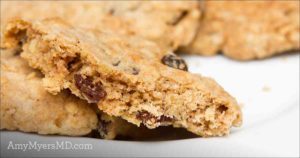
 I received these Cinnamon Raisin Cookies as a birthday gift from the wife (Anne) of one of my team members. They remind me so much of the oatmeal raisin cookies my mom used to bake and that I haven’t been able to enjoy since following The Myers Way®.
I received these Cinnamon Raisin Cookies as a birthday gift from the wife (Anne) of one of my team members. They remind me so much of the oatmeal raisin cookies my mom used to bake and that I haven’t been able to enjoy since following The Myers Way®.
These cookies are perfectly fluffy on the inside and delightfully crisp on the outside. A light splash of cinnamon along with the sweet flavor of raisins make these cookies feel nostalgic, while still being 100 percent The Myers Way®–compliant. Anne was kind enough to let me share this recipe with all of you—thank you, Anne!
Anne’s Amazing Cinnamon-Raisin Cookies
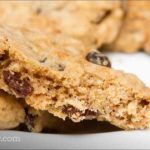
Protocol
Autoimmune Solution (AIP), Paleo, Thyroid Connection
Servings
9 cookies
Ingredients
1/4 cup palm shortening2 Tbsp pure maple syrup1/4 cup coconut sugar1 1/2 tsp pure vanilla extract3/4 cup arrowroot flour1/4 cup tigernut flour1 Tbsp The Myers Way® Gelatin (or similar gelatin)1 tsp aluminum-free baking soda1/2 tsp cream of tartar2 tsp ground cinnamon1/2 tsp fine sea salt1/4 cup raisins
Servings:
cookies
Units:
MetricUS Imperial
Instructions
Heat oven to 350°F. Grease a baking sheet pan with either coconut oil or palm shortening.In the large bowl of an electric mixer, add the palm shortening, maple syrup, sugar, and vanilla. Beat until creamy.In another bowl, whisk together the arrowroot flour, tigernut flour, gelatin, baking soda, cream of tartar, cinnamon, and sea salt.
The post Anne’s Amazing Cinnamon-Raisin Cookies appeared first on Amy Myers MD.
November 5, 2018
6 Nutrient Deficiencies Linked to Fatigue

 Are you tired and exhausted day after day, even after getting a full night’s sleep? Do you struggle to keep your appointments or engagements with friends because you barely have the energy to get out of bed? You are not alone. Chronic fatigue is such an epidemic that it has become the norm to feel exhausted all the time.
Are you tired and exhausted day after day, even after getting a full night’s sleep? Do you struggle to keep your appointments or engagements with friends because you barely have the energy to get out of bed? You are not alone. Chronic fatigue is such an epidemic that it has become the norm to feel exhausted all the time.
However, I want you to know that it is NOT normal to feel perpetually tired. In fact, it is most often a sign of an underlying health issue. Fatigue can be a symptom of autoimmune disease or other health conditions, such as anemia, heart disease, cancer, sleep apnea, Lyme disease, and depression.1 Extreme fatigue is also the primary hallmark of the increasingly common chronic fatigue syndrome (CFS).
CFS, also referred to as myalgic encephalomyelitis (ME) affects 2.5 million Americans. It is a debilitating disorder that is characterized by extreme fatigue that doesn’t go away with rest and sleep. It is not simply the symptom of another underlying health condition (such as cancer, heart disease, or lupus); treatment (such as chemotherapy or radiation); or activity (such as overtraining in sports or staying up with a new baby). Rather, CFS is a health condition and diagnosis in and of itself. In addition to fatigue, symptoms of CFS include muscle weakness, pain, headaches, and memory loss.2,3,4
I see many patients on the autoimmune spectrum who experience chronic fatigue. Before my diagnosis of Graves’ disease, I also experienced fatigue and exhaustion along with insomnia, so I know how you feel, and the good news is that I also know how you can improve your health and increase your energy levels naturally!
Did you know that your energy levels are closely connected to the nutrients you take in and absorb? When patients with fatigue and related complaints come to me for help, I always check for nutrient deficiencies, which may be the underlying cause of the problem.
Finding out what these nutrient deficiencies are is the first step. Then once you learn the root causes of those deficiencies, you can learn how to correct them in order to reclaim your health and vitality.
6 Nutrient Deficiencies Linked to Fatigue

1. Vitamin B12 and other B Vitamins
Your body needs B vitamins to convert into energy. If you are low in B vitamins, your mitochondria – the powerhouse of your cells – cannot generate energy properly. Vitamin B12 deficiency is particularly common and can result in fatigue, weakness, and low energy. B12 is essential for red blood cell production, and so low B12 levels can also lead to anemia. Though B12 deficiency is much more common among vegans and vegetarians, it can happen to anyone due to a diet lacking in nutrient-dense foods, poor absorption (common with gut infections such as SIBO), and other health issues.5,6,7,8,9
2. Magnesium
Magnesium is a powerful mineral for promoting relaxation and energy production in your body. It is necessary to store the energy molecule ATP. Magnesium deficiency impairs the energy pathways your mitochondria use to generate ATP, and can lead to chronic fatigue, tiredness, inflammation, and free radical damage.
Magnesium deficiency affects nearly everyone. If you are consuming too much processed food, refined sugar, salt, alcohol, and coffee, your risks of a deficiency are even greater. What’s more, due to intensive chemical farming practices, our soils have been depleted of magnesium, making it nearly impossible to meet your magnesium needs even if you are eating a diet of real, whole foods. For this reason, most people can benefit from taking a high-quality magnesium supplement, however, it is particularly important to supplement if you are experiencing fatigue or dealing with chronic fatigue syndrome.10,11
3. Omega-3
Since your body cannot make essential fatty acids, you need to eat good fats to fuel it properly. Unfortunately, the typical Western diet is high in inflammatory omega-6 fatty acids due to an abundance of vegetable oils and processed foods, and low in anti-inflammatory omega-3 foods such as wild-caught salmon and other fatty fish. An imbalance of omega-3 and omega-6 fatty acids can lead to fatigue and inflammation, and set yourself on the path to chronic illness.12,13
4. Vitamin D
Vitamin D is essential for muscle and bone strength, along with a number of other important bodily functions. Suboptimal Vitamin D levels can lead to low energy and fatigue. Vitamin D deficiency is particularly prevalent in places with little sunshine, however if you are spending most of your time indoors, chances are that your body is low in vitamin D regardless of where you live. I have done nutritional testing on thousands of patients and of those who were not supplementing, virtually all were deficient in vitamin D.14,15,16
5. Iron
Iron is essential for creating red blood cells, which carry oxygen throughout your body. Low iron levels can lead to anemia. Anemia occurs when there aren’t enough red blood cells in your body to meet its oxygen needs or if your blood cells are unable to carry enough hemoglobin. The first sign of anemia is fatigue along with pale skin and dull hair.
If you are unusually tired, it is important to get your iron levels checked. And, if you are a woman, an endurance athlete, or eat a vegetarian or vegan diet high in processed food, your risks of iron deficiency and anemia are higher. Since too much iron can be harmful as well, it is important to get a blood test and only supplement if your iron levels are suboptimal. Eating iron-rich foods, such as grass-fed beef, spinach, or organ meats, however, is super important for preventing and reversing anemia.17,18,19,20
6. Potassium
Potassium is an important mineral for supporting the healthy functioning of your heart, nerves, and muscles. It can help improve muscle recovery and endurance. Low levels of potassium can lead to fatigue, muscle weakness, and numbness. You can have low potassium levels due to excessive sweating, diarrhea, vomiting, antibiotics, diuretics, and kidney disease.21,22
One problem I see in many of my patients is that they are eating too much sodium and not enough potassium. While sodium is also important for fluid balance, as well as nerve and muscle function, a diet high in processed foods contains too much sodium and not enough potassium. It is important to keep the optimal balance of these two electrolytes through a nutrient-rich diet and proper supplementation.23,24 Bananas, sweet potatoes, cantaloupe, and cooked broccoli are all good sources of potassium.
What Causes Nutrient Deficiencies in Those with Fatigue
To correct nutrient deficiencies linked to fatigue and regain your energy, you must get to the root cause and identify why you may be lacking these nutrients in the first place. Let’s look at the most common reasons why my patients with fatigue are often low in these key nutrients.
A Nutrient-Poor and Inflammatory Diet
If your diet is high in processed food, refined sugars, and white flours, you are missing out on the nutrients your body requires to create sustained energy and optimal health. Unfortunately, intensive chemical farming practices have robbed our soil of its nutrients. In fact, 40% of the soil used to grow our food worldwide has been degraded or severely depleted of vital minerals thanks to modern agriculture.25 So even the whole foods you eat are not nearly as rich in nutrients as they were when your grandparents were young.
To make matters worse, inflammatory foods that are common in the typical Western diet, such as gluten, dairy, grains, legumes, sugar, eggs, caffeine, nuts, seeds, and nightshades can result in a leaky gut which leads to poor nutrient absorption and chronic health issues that are often associated with fatigue.26,27,28,29,30
Leaky Gut
A compromised diet, environmental toxins, certain medications, and stress can result in leaky gut, Leaky gut means that tiny holes develop on your gut lining that allow food particles, bacteria, yeast, and viruses to enter your bloodstream. If you have leaky gut, your body can’t absorb food properly which can lead to vitamin and mineral deficiencies, inflammation, and fatigue.31,32
Gut Infections
Gut infections, such as Candida overgrowth and small intestinal bacterial overgrowth (SIBO) can interfere with nutrient absorption.
Candida overgrowth is one of the most common problems I see in my patients, especially in those with chronic fatigue and autoimmune conditions. In small amounts, your body can benefit from Candida to aid digestion and nutrient absorption. However, when it grows out of control, it leads to gut dysbiosis, breaks down the wall of your intestines, and causes leaky gut, which releases toxins into your bloodstream and opens the door to an array of health problems, including chronic fatigue.
SIBO occurs when the bacteria in your small intestine get out of balance and overgrow. Most bacteria in your body meant to be located in your large intestine and colon to help to break down food, synthesize vitamins, and eliminate waste. However, when these bacteria find their way to your small intestine, it can lead to SIBO.33
When your body is overtaken by Candida overgrowth, SIBO, or other gut infections, such as the Epstein-Barr Virus or Lyme, it leads to an imbalance of microflora, compromised nutrient absorption, digestion issues, an impaired immune system, and other health issues, of which chronic fatigue is a major symptom.
Genetic Mutations
MTHFR and other common genetic mutations can lower your body’s ability to convert nutrients to their active form via methylation, including B vitamins, folate, and choline.
Meanwhile, VDR mutations can result in vitamin D deficiency.34 This is significant because, as I mentioned above, Vitamin D can boost your energy levels, which is why spending time in the sunlight feels so energizing!35
How to Prevent or Overcome Nutrient Deficiencies Linked to Fatigue
The good news is that nutrient deficiencies linked to fatigue can be corrected. You can restore optimal levels of key nutrients by optimizing your diet, taking the targeted supplements, and addressing the underlying causes of your deficiencies. By following these steps, you can nourish your body, regain your energy, and create optimal health and well-being.
Eat a Nutrient-Dense Diet
Getting your nutrients through food is the best method and the first necessary step to correct deficiencies. Eating a nutrient-dense diet such as The Myers Way® will set you up for success.
To support your energy levels and overcome fatigue, eat plenty of these foods:
B Vitamins: leafy greens, root veggies, grass-fed or pasture-raised meat, shellfish
Magnesium: dark leafy greens, seaweed, figs, fish, avocados, bananas
Vitamin D: fatty fish, organ meats, spirulina, wild mushrooms, bee pollen
Omega-3: grass-fed meats, fatty fish, flax and chia oil
Iron: fatty fish, grass-fed or pasture-raised meat, organ meats
Potassium: bananas, sweet potatoes, cucumber, cooked spinach, oranges, apricots
If you need ideas for delicious meals that can help you correct nutrient imbalances, reduce fatigue, and bring back your energy, my cookbook, The Autoimmune Solution Cookbook contains over 150 recipes featuring foods that are packed with nutrients that you need to prevent and reverse chronic illness, and support your overall health.
Repair Your Gut
Eating a diet rich in real whole foods is critical, however, it is often not enough if you are dealing with a leaky gut, which can compromise your body’s ability to digest and absorb these nutrients. As I always say, “You aren’t what you eat, you are what you digest and absorb!” Repairing your gut will reduce inflammation and improve your ability to absorb nutrients properly, and as a result, you can finally regain the energy to live the life you want to live–whether that means playing with your grandchildren, traveling to a foreign country, or simply pursuing a beloved hobby that you’ve let fall to the wayside!
I recommend the 4R approach to repair your gut and to build yourself a solid foundation for optimal health and wellness.
Heal Your Infections
To overcome chronic fatigue, it is vital to pinpoint and heal underlying infections.
While you can often tell if you have Candida overgrowth based on symptoms alone, I recommend testing as well to be sure. A blood test that checks for IgA, IgM, and IgG Candida antibodies, a complete blood count, stool testing, and an Organix® Dysbiosis urine test can all help identify Candida overgrowth within your body. My Candida Breakthrough Program can guide you on how to starve the yeast and overcome Candida overgrowth step-by-step.
Program can guide you on how to starve the yeast and overcome Candida overgrowth step-by-step.
Along with symptom checking, SIBO can be diagnosed through a SIBO breath test, Organix® Dysbiosis test, and comprehensive stool testing. To overcome SIBO, you must starve the bacteria by removing foods that feed the bacteria (sugar and carbs in particular), prune the overgrown bacteria with the help of Microb-Clear , and feed the good bacteria with probiotics. Since regular probiotics can feed an overgrowth, it is crucial that you only take soil-based probiotics, such as Primal Earth
, and feed the good bacteria with probiotics. Since regular probiotics can feed an overgrowth, it is crucial that you only take soil-based probiotics, such as Primal Earth until you have overcome SIBO.
until you have overcome SIBO.
Learn About Your Unique Genetic Needs
If you want to understand how your unique genetics can cause nutrient deficiencies, you can order a genetic test through 23andme.com. Once you receive your results, you can enter your raw data into a third-party tool, such as Livewello or Genetic Genie to check for possible genetic mutations and learn how they may affect your health.
Add in High-Quality Supplements
The unfortunate truth is that the combination of our nutrient-depleted soils, toxic environment, and high-stress modern life make it very difficult to rely exclusively on nutrients from food to achieve optimal health. High-quality supplements can help fill the gap and provide you with the nutrients your body needs to maintain all-day energy.
I recommend the following supplements to anyone seeking to eliminate fatigue, reverse autoimmune disease and other chronic illnesses, and achieve vibrant health.
Multivitamin: Taking a high-quality, daily multivitamin is the building block of optimal health. I’ve specifically designed a multivitamin filled with B vitamins, magnesium, potassium and other essential vitamins and minerals you need to correct nutrient deficiencies.
Vitamin D: Since most people don’t get adequate amounts of vitamin D from the sun alone, it is crucial to take a Vitamin D supplement.
Vitamin B: If you have one or two MTHFR mutations, my Methylation Support is an excellent choice with pre-methylated B vitamins to help increase your energy levels. .
Magnesium: I recommend NeuroCalm Magnesium as the best form of magnesium for brain health, balanced mood, cognitive function, and restorative sleep, as it has the ability to cross the blood-brain barrier.
Omega 3: When selecting an Omega-3 supplement, it is important that you choose from reputable sources that verify through a third party that they have no detectable mercury in their product, such as my Complete Omega-3 Softgels.
Iron: Since high iron levels can lead to health problems, make sure to get your iron levels checked before starting supplementations. When you are selecting an iron supplement, choose high-quality capsules with elemental iron to ensure ideal absorption.
Now that you understand which nutrient deficiencies may be causing your fatigue, what the root causes of these deficits are, and how to correct them, you have the power to reclaim your health. You can beat chronic fatigue and regain your vitality by eating a nutrient-dense diet, repairing your gut, healing your infections, understanding your unique genetic needs, and taking the right supplements. Finally, you will have the energy to live the life you want–and deserve!
Save 15% on The Myers Way® Multivitamin Now Through Thursday!

To overcome fatigue and boost your energy levels, it’s absolutely critical to get the full spectrum of nutrients that your body needs. Unfortunately, between environmental toxins, soil depletion, stress, and other modern lifestyle factors, it can be challenging to get all your vitamins and minerals from food alone.
That’s why I custom-formulated The Myers Way® Multivitamin, designed for optimal absorption and bioavailability to ensure that you get everything you need for optimal health. My multivitamin is perfect for anyone who:
Wants to obtain optimal amounts of the nutrients their body needs to thrive
Wants to support healthy thyroid and adrenal function
Wants to support optimal hormone balance and weight loss
Has MTHFR mutations and wants to promote normal methylation
Doesn’t eat enough organic fruit and vegetables
Follows the Standard American Diet (SAD)
And, now through Thursday, November 8th at Midnight CST, you can SAVE 15% on The Myers Way® Multivitamin! So don’t miss your chance to stock up on this essential!
The post 6 Nutrient Deficiencies Linked to Fatigue appeared first on Amy Myers MD.
November 2, 2018
Holiday Spice Waffles

 I absolutely LOVE waffles (who doesn’t?), however it’s incredibly rare to find a waffle recipe that is gluten-free, dairy-free, sugar-free, and egg-free. Presenting: my Holiday Spice Waffles!
I absolutely LOVE waffles (who doesn’t?), however it’s incredibly rare to find a waffle recipe that is gluten-free, dairy-free, sugar-free, and egg-free. Presenting: my Holiday Spice Waffles!
These Holiday Spice Waffles are perfect for a stay-in brunch with family this holiday season! I use The Myers Way® Gelatin in place of eggs as a binder in the batter, as well as cassava flour, tigernut flour, and coconut milk to keep this recipe 100% autoimmune-friendly!
I am so excited with how yummy these waffles came out, and hope you enjoy them as much as I do!
Holiday Spice Waffles

Protocol
Autoimmune Solution (AIP), Elimination Diet, Paleo, Thyroid Connection
Servings
4 waffles
Ingredients
3/4 cup cassava flour3/4 cup tigernut flour1/2 cup arrowroot powder1 tsp baking soda1/2 tsp salt1 scoop The Myers Way® Gelatin2 cups coconut milk1/2 cup coconut oil melted1/2 tsp cinnamon or pumpkin pie spice1/2 tsp vanilla extract1/4 tsp liquid Stevia (optional)
Servings:
waffles
Units:
MetricUS Imperial
Instructions
Preheat waffle iron.Combine cassava flour, tigernut flour, arrowroot, baking soda, cinnamon or pumpkin spice, and salt in a medium bowl. Set aside.Prepare the gelatin ‘egg’ — mix 1 scoop gelatin with 6 tablespoons of warm water - stir and set aside for 5 minIn another bowl, whisk together coconut milk, vanilla, melted coconut oil and liquid stevia (optional). Add dry ingredients to to wet and mix until thoroughly incorporated.Use nonstick waffle iron or brush your waffle iron with a bit of coconut oil.Add batter to waffle iron and cook until golden brown. Serve hot.
The post Holiday Spice Waffles appeared first on Amy Myers MD.
October 29, 2018
10 Tips for Preventing the Cold & Flu Naturally

 Flu season is well underway, and I’ve received lots of questions on The Myers Way® Facebook Community about how to avoid seasonal illness and stay well this winter. This is an important question, as getting sick can stress your immune system, increasing your risk of a flare up in an autoimmune condition, thyroid dysfunction, or other chronic illness. Getting a cold or the flu can also often lead to taking antibiotics which are typically unnecessary (since the cold and flu are both caused by viruses) and can damage your gut.
Flu season is well underway, and I’ve received lots of questions on The Myers Way® Facebook Community about how to avoid seasonal illness and stay well this winter. This is an important question, as getting sick can stress your immune system, increasing your risk of a flare up in an autoimmune condition, thyroid dysfunction, or other chronic illness. Getting a cold or the flu can also often lead to taking antibiotics which are typically unnecessary (since the cold and flu are both caused by viruses) and can damage your gut.
Let’s look at my top 10 tips for natural ways you can support your immune system to prevent a cold and the flu!

10 Tips to Support Your Immune System and Prevent the Cold & Flu Naturally
Ensuring a strong foundation of health and following simple best practices will go a long way in decreasing your risk of getting the flu. Here are ten tips for staying healthy this flu season.
1. Wash Your Hands Frequently and Thoroughly
This is the number one way to prevent the flu and other respiratory infections. You must scrub your hands thoroughly with soap and water for at least 20 seconds in order to kill viruses. Twenty seconds is about how long it takes to sing the ABC’s one time through. Do not touch your eyes, nose, or mouth without first washing your hands.
2. Repair Your Gut
Your gut is your gateway to health, as nearly 80% of your immune system is located in your gut. Make sure your gut is in tip-top shape, and take a high-quality, multi-strain probiotic with at least 25 billion units. This will keep your levels of good gut bacteria up to help fight off infections.
3. Reduce Sugar and Alcohol Consumption
With the abundance of holiday treats out this time of year, sugar cravings can be a real bear. However, consuming too much sugar can suppress your immune system and make it more difficult for your body to fight off infections, including the flu virus. It also leaves you open to gut infections such as Candida and SIBO, which suppress your immune system and cause leaky gut. And even moderate alcohol consumption suppresses your central nervous system, and therefore your immune system.
4. Reduce Your Stress
Stress is known to suppress your immune system. Consider meditation, yoga, or acupuncture. See additional relaxation tips and learn about my favorite ways to relieve stress in this article.
5. Get 7-9 Hours of Sleep Every Night
Your body relies on sleep to recuperate from daily exposure to toxins. Chronic sleep deprivation can significantly reduce immune function.
6. Take an Immune Booster
Give your immune system an added boost with a supplement containing immunoglobulins and protein, such as the immune boost powder I carry in my store. This supplement is a purified form of colostrum, which is the first milk after birth designed to bolster the immune system.
The immunoglobulins in colostrum will boost your IgA antibodies – which are your body’s first line of defense. These IgA antibodies are produced by immune cells in your gut and can deactivate and even eliminate harmful pathogens and toxins, such as those that come with seasonal sickness and bacterial imbalances. This means immune boost will strengthen, not heighten your immune system, which is key for anyone with autoimmunity.
I recommend this supplement for anyone looking to take preventative measures with their health and avoid seasonal illnesses. Although it is sourced from dairy, it is free of casein (the protein in dairy that most people are sensitive to), and contains such minimal dairy that it will not cause a reaction for the average person.
7. Supplement with Glutathione and Turmeric
Antioxidants are very important for your immune function. Glutathione is the chief antioxidant in your body, responsible for enhancing your immune system and helping your liver with detoxification. Curcumin is the orange pigment in turmeric and a potent free radical scavenger that improves joint health and cardiovascular function.
8. Optimize Vitamin D
Vitamin D is a powerful immune system modulator, meaning it is key to fighting off infections and regulating autoimmunity. Optimal levels range from 50 to 70 ng/mL, so I recommend taking 5,000 IU of a high-quality vitamin D supplement per day and working with a physician to regularly monitor your levels. You will also want to be sure that your vitamin D supplement is paired with vitamin K (like the one I carry in my store) to ensure that it is safely absorbed and doesn’t lead to artery calcifications.
9. Drink Bone Broth
You probably remember your mother or grandmother giving you chicken soup when you were sick, and how it always seemed to help you feel better! It’s not just folklore–bone broth is actually extremely beneficial for your immune system. In fact, a study published in the journal Chest showed that eating chicken soup during a respiratory infection reduced upper respiratory symptoms, as well as the number of white blood cells (the immune cells responsible for cold and flu symptoms). These benefits are thought to be from bone broth’s ability to reduce inflammation, thanks to amino acids such as proline and glycine.1
You can make your own bone broth this Thanksgiving by saving your turkey bones and vegetable scraps, and simply boiling them for about 8 hours (a slow-cooker comes in handy here). Or, if you want the benefits of bone broth without the hassle, you can supplement with collagen or gelatin, both of which act to optimize your immune system and support a healthy gut lining to defend your body against invading pathogens.
10. Get Plenty of Exercise
Exercise can boost your immune system by increasing your circulation. Increased circulation allows antibodies to travel throughout your bloodstream faster, making it easier for your immune system to fight off an illness. Exercise can also enhance your immune system by relieving stress and slowing the release of stress hormones in the body.
Supporting your immune system, strengthening your gut health, and remaining rested and stress-free are not only the keys to preventing the flu, they are an integral part of The Myers Way®, and will keep you on the path to optimal health.
The post 10 Tips for Preventing the Cold & Flu Naturally appeared first on Amy Myers MD.
October 28, 2018
9 Foods to Eat for a Healthy Brain
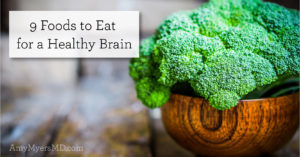
 Taking care of your brain health is more important than ever. There are more than 9.9 million new cases of dementia each year worldwide, and this figure is projected to increase to 131.5 million by 2050.1,2 And older adults are not the only ones at risk for cognitive disorders. More than one-third of graduate students report suffering from depression, and this trend is showing no signs of slowing down.3,4
Taking care of your brain health is more important than ever. There are more than 9.9 million new cases of dementia each year worldwide, and this figure is projected to increase to 131.5 million by 2050.1,2 And older adults are not the only ones at risk for cognitive disorders. More than one-third of graduate students report suffering from depression, and this trend is showing no signs of slowing down.3,4
Women are particularly affected by both dementia and depression.5 They are twice as likely as men to suffer from Alzheimer’s disease, and it is predicted that depression will be the leading cause of disease burden for women by 2030.6 However, general statistics show that our brains are not getting healthier, and our memory is beginning to falter earlier in life.7
Rising levels of stress from our hectic modern lifestyles can damage your gut, put you at a higher risk of chronic health issues, and disrupt your hormones.8,9 What’s more, stress can also take a toll on your memory, the physical structure of your brain, and your mental health.10,11 One of the top complaints I hear all the time from my patients is brain fog, a symptom that can develop alongside candida overgrowth, multiple sclerosis, and thyroid imbalance.
As such, your brain can act as a thermometer of gut health and chronic illness, allowing you to gauge how healthy you are overall. Fortunately, you can significantly reduce your risk of brain-related illnesses by making changes to your diet and lifestyle.
Certain foods can be very helpful for boosting cognition, mood, concentration levels, and fact recall, as well as preventing brain fog and mental decline. In this article, you will learn about 9 foods filled with nutrients that improve brain health and aid in the reversal of memory loss and cognitive dysfunction.
1. Coconut Oil
The main fuel your brain uses for energy is glucose. However, your brain can also run on other types of fuel, such as ketones, or ketoacids. These substances are produced by your body when fat is converted into energy, and have been shown to prevent brain cell death.12
Coconut oil contains around 66% medium/chain triglycerides (MCTs), which travel directly to your liver, where your body naturally converts them into ketones. Your liver then releases the ketones into your bloodstream so they can be transported to your brain.
A recent study showed that coconut oil improves cognitive ability in Alzheimer’s patients, making it useful for both the prevention and treatment of brain health issues.13
2. Blueberries
Blueberries are rich in a number of brain-boosting antioxidants. They are rich in gallic acid, which protects our brains from degeneration and stress, and polyphenols, which combat cognitive decline.
A study on the memory of healthy elderly individuals showed that a polyphenol-rich grape and blueberry extract improved age-related memory decline in those with the highest cognitive impairments.14
Another study suggested that school-aged children’s memory skills can also get better when they are given flavonoid-rich blueberry remedies.15 Flavonoids from blueberries have been associated with slower rates of cognitive decline in older adults, too, as well as improved neurocognitive function, lower symptoms of depression and better glucose control.16,17
Berries are one of my favorite foods because they are low in sugar and low-carb, making them a great option for diabetics and those dealing with Candida or SIBO. I keep a bag of frozen organic berries on hand at all times for adding to smoothies. Fresh berries are also a great snack all on their own!
3. Turmeric
Turmeric is a yellow spice used in curries and other traditional Indian dishes. It is anti-inflammatory and rich in the antioxidant compound curcumin.
Curcumin is a neuroprotective agent that is capable of crossing your blood-brain barrier, as well as inhibiting and breaking up the destructive beta amyloids that can accumulate in the brains of Alzheimer’s patients.18 It can also boost memory and stimulate new cell growth in the brain.19
Turmeric root only contains 2 – 5% curcuminoids by weight and curcumin is notoriously NOT bioavailable. Your body may struggle to absorb enough of the active curcumin compound from culinary turmeric alone since you typically only use the spice in very small amounts.
Because of this, I also recommend taking a curcumin supplement for its ability to support a healthy immune response and its brain-boosting effects.
4. Celery
Luteolin, a plant compound found in celery, has been linked to lower rates of age-related memory loss in animals.20 It calms inflammation in the brain, one of the main causes of neurodegeneration.
Adding celery to a juice is easy and adds a slightly salty flavor. I also like to enjoy celery sticks with homemade dips.
5. Broccoli
Both broccoli and cauliflower are good sources of choline, a B vitamin known for its ability to support brain development. However, broccoli is also anti-inflammatory thanks to its high levels of flavonoids and other phytonutrients, which support your body’s detoxification pathways.
Studies on choline indicate its ability to improve learning and memory, boost cognitive function and prevent age-related memory decline by supporting cells in an area of the brain called the hippocampus.21
Clean Greens contains organic broccoli sprout powder and organic sunflower lecithin, both of which are good sources of choline.
contains organic broccoli sprout powder and organic sunflower lecithin, both of which are good sources of choline.
6. Extra Virgin Olive Oil
Real extra virgin olive oil (EVOO) is a true brain food. It’s also one of the reasons why a Mediterranean diet is recommended for optimum brain health. The oil helps combat amyloid-beta derived diffusible lignans (ADDLs), the proteins that induce Alzheimer’s and are toxic to the brain.22
Unfortunately, many olive oil products on the shelf are not 100% olive oil. They are cut with lesser quality oils such as canola and colza oils, so be sure to buy from trustworthy sources, and look for a Non-GMO Project and/or Certified Organic label.
EVOO contains polyphenols and antioxidants such as Vitamin E, which boost learning and memory and are capable of helping reverse age- and disease-related changes in the brain.23
The best way to add more olive oil into your daily routine is to use it to make a salad dressing or drizzle it into warm soups. That way, you can preserve the heat-sensitive antioxidants.
7. Leafy Greens
New research is telling us that daily servings of greens such as kale, Swiss chard and romaine lettuce can help keep dementia at bay. The study revealed that when adults eat just one serving of leafy green vegetables once or twice per day, they experience slower mental deterioration, even when they have a family history of dementia.24
Greens are also naturally high in magnesium, which relaxes the nervous system and calms the mind.
8. Fatty Fish
The human brain is 60% fat, and around 50% of that fat is composed of the omega-3 fatty acid DHA, which is negatively linked to dementia.25 Certain cold water fish, including salmon, sardines, mackerel, trout, and tuna, are rich in omega-3 fatty acids such as DHA, and four 4-oz servings of fatty fish per week should provide optimal levels of omega-3 oil for your body and brain.
You might have rightful concerns about sourcing fish that is free of heavy metals. Heavy metals have been linked to significant damage to your brain.26 This is why I recommend looking for a high-potency omega-3 supplement for brain health that is completely free of these contaminants. The one I carry in my store has been 5-star certified by the International Fish Oil Standards Program (IFOS), the absolute highest attainable ranking for quality, purity, and freshness. You can also find a list of the Environmental Defense Fund’s best and worst seafood choices for health on its website.
9. Grass-Fed Meat
As you may know, I was a vegetarian for over twenty years. However, after I was diagnosed with Graves’ disease, I radically changed my diet because I realized that I was missing out on some key nutrients that can only be found in animal products, particularly B12.
That’s why if you are interested in optimizing your brain health, I cannot stress enough the importance of having a good quality source of animal protein in your diet. People with B12 deficiency are more likely to score lower on cognitive tests and have a smaller brain volume than those with optimal B12 levels.27
Red meat such as grass-fed beef is an excellent source of this important vitamin, so be sure to add at least three servings per week to your brain-boosting diet. The Myers Way® emphasizes a range of high-quality grass-fed and pasture-raised meats to help you maintain optimal levels of B12 and other brain-supportive nutrients.
Protecting your brain health is more important now that it has ever been. However, with the right foods, you can combat cognitive decline, as well as prevent memory problems and depression, and keep your mind sharp long into your golden years.
For more ideas on how to use these foods as part of a general plan designed to help you prevent and reverse chronic illness, check out The Autoimmune Solution Cookbook.
The post 9 Foods to Eat for a Healthy Brain appeared first on Amy Myers MD.
October 26, 2018
AIP Pumpkin Spice Latte
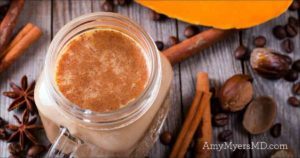
 Can’t resist the warm fall spices and creamy decadence of a pumpkin spice latte? Then you HAVE to try this recipe!
Can’t resist the warm fall spices and creamy decadence of a pumpkin spice latte? Then you HAVE to try this recipe!
My AIP Pumpkin Spice Latte is free from the excess sugar, dairy, caffeine, and other nasty ingredients you’d find at your local coffee shop–without sacrificing any of the taste! It’s made with REAL pumpkin, filling protein, and healthy fats from coconut milk. No artificial colors and flavors here!
This is one pumpkin spice latte you don’t have to feel guilty about drinking again and again this holiday season! Enjoy!
AIP Pumpkin Spice Latte
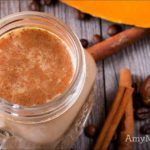
Course
Beverage
Protocol
Autoimmune Solution (AIP), Elimination Diet, Paleo, Thyroid Connection
Servings
2 people
Ingredients
2 cups full fat coconut milk1/2 cup canned or fresh pumpkin puree1 scoop The Myers Way® Pumpkin Spice Paleo Protein1 tsp ground cinnamon1/2 tsp allspice1 tsp vanilla1-2 Tbsp maple syrup
Servings:
people
Units:
MetricUS Imperial
Instructions
Add the coconut milk and pumpkin puree to a saucepan at medium heat. Whisk together until mixture begins to simmer. Remove from heat and pour into blender. Add in protein powder, cinnamon, allspice, vanilla, and maple syrup to taste. Blend until frothy and serve.
The post AIP Pumpkin Spice Latte appeared first on Amy Myers MD.
Amy Myers's Blog
- Amy Myers's profile
- 74 followers



